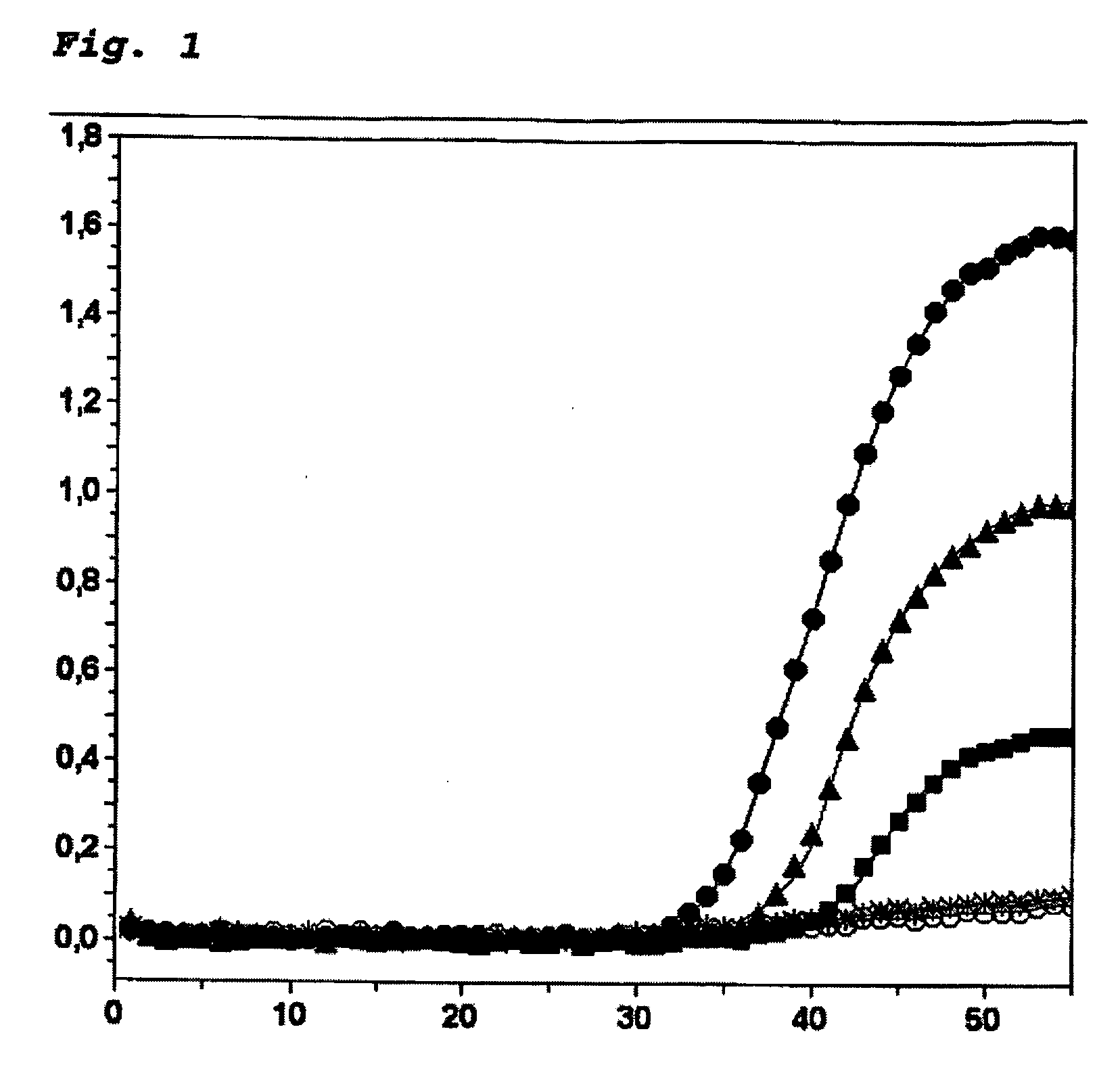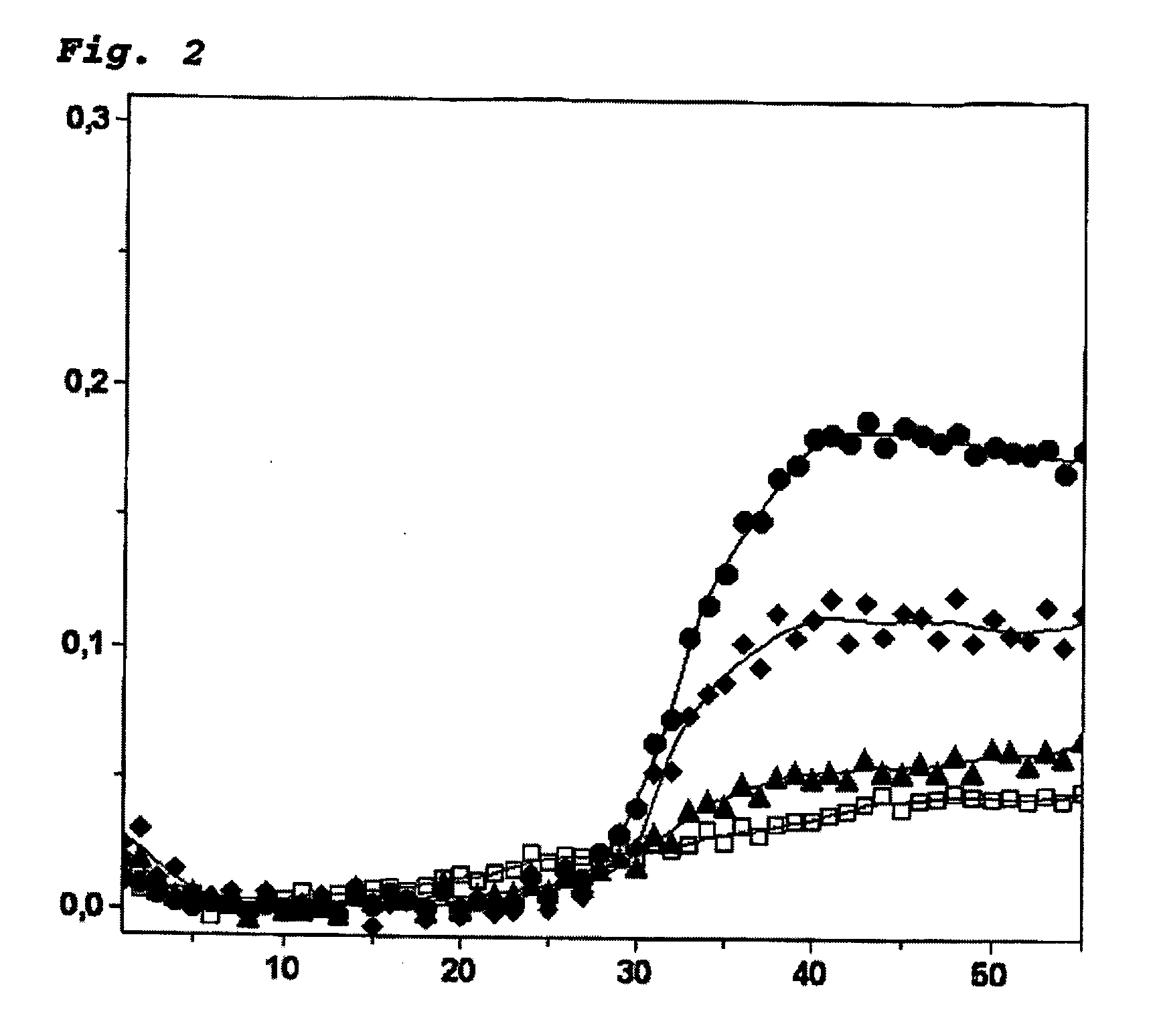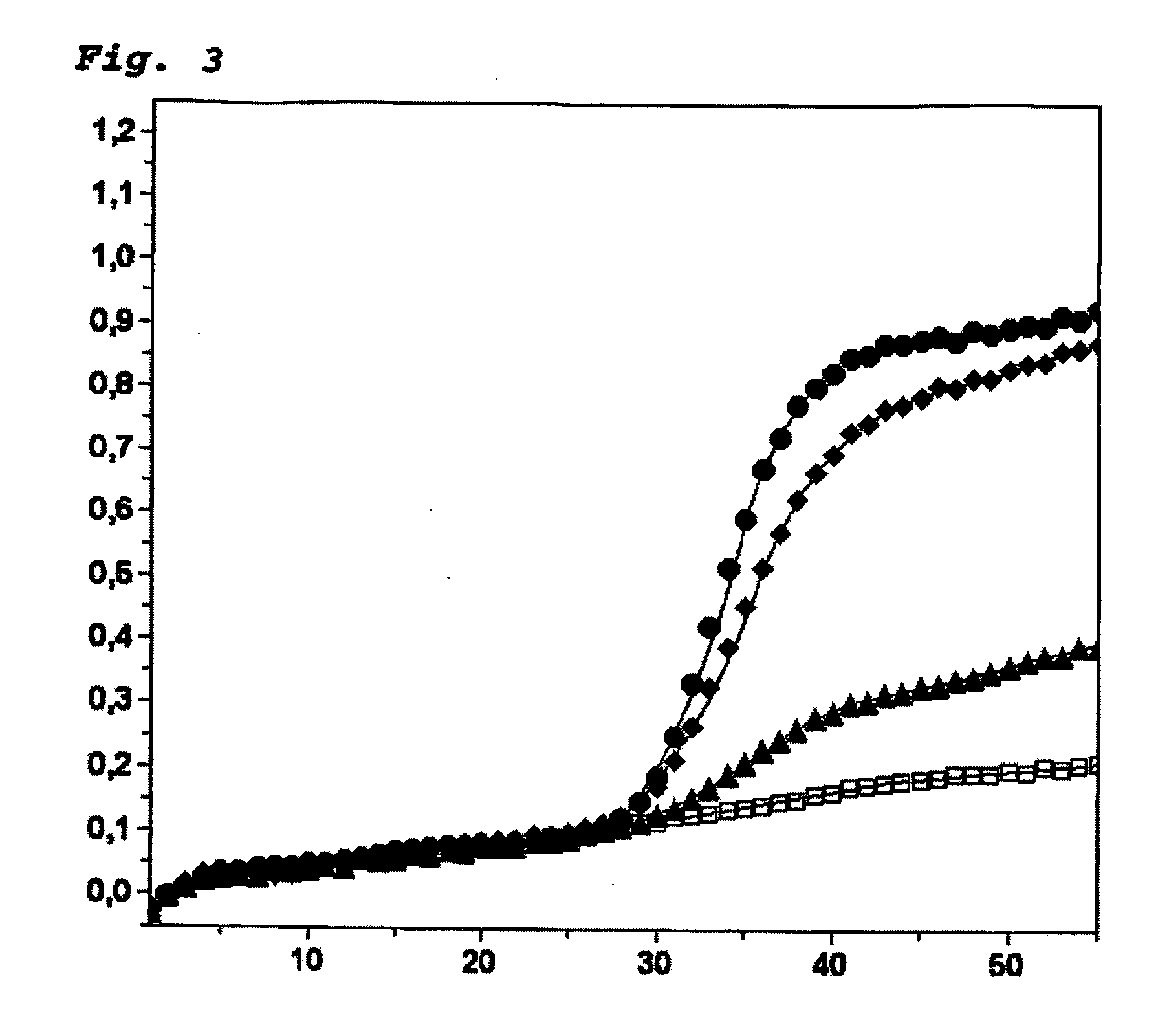Method for the detection of cytosine methylations in dna with the aid of scorpion
a methylation detection and scorpion technology, applied in the field of methylation detection of cytosine in dna, can solve the problems of pcr amplification, inability to detect methylation, and many conventional detection methods based on hybridization cannot distinguish between cytosine and methylcytosine,
- Summary
- Abstract
- Description
- Claims
- Application Information
AI Technical Summary
Benefits of technology
Problems solved by technology
Method used
Image
Examples
example 1
Quantification of Methylated DNA of the brca1 Gene with a Methyl Hairpin Real-Time PCR Assay
[0047] A bisulfite-treated fragment of the human brca1 was amplified (Genebank Accession: L78833.1, nt 3538-nt 3666; Seq ID-7). Human DNA from peripheral blood cells (Roche Diagnostics) and comprising methylated human DNA (Serologicals) was utilized as the matrix. Both types of DNA were treated with a bisulfite solution (Olek et al. 1996, loc. cit.). In this way unmethylated cytosines were converted to uracil, while 5-methylcytosines remained unchanged. After the bisulfite treatment, the DNA concentration was determined by means of UV absorption (260 nm). The efficiency of the assay was investigated with the use of 10 ng, 1 ng and 0.1 ng of bisulfite-treated methylated matrix DNA. The reaction was conducted in a total volume of 20 μl with the use of a LightCycler apparatus. The reaction batch contained 10 μl of matrix DNA (see below for concentration data), 2 μl of the FastStart-LightCycler ...
example 2
[0052] Comparison of a methyl-hairpin assay with a MethyLight assay for the methylation-specific detection of the brca1 amplicon in DNA mixtures of methylated and unmethylated, bisulfite-treated DNA. The real-time PCR methods for the methyl hairpin and the MethyLight technologies were compared in the following. The quantity of originally methylated, bisulfite-treated DNA against a background of originally unmethylated, bisulfite-treated DNA was determined.
[0053] The PCR amplifications were conducted in a total volume of 20 μl with the use of a LightCycler apparatus (Roche Diagnostics). A bisulfite-treated DNA fragment of the human brca1 gene was amplified (nt 3538-nt 3666 in Genebank Accession No. L78833.1; Seq ID-7). The methyl hairpin reaction batch contained 10 μl of matrix DNA (see below for concentrations), 2 μl of the FastStart-LightCycler reaction mix for hybridization probes (Roche Diagnostics), 0.30 μmol / l forward primer (5′-GAAGtTGAtAGATGGGTATTtTTTGA-3′; Seq ID-1), 0.10 μ...
example 3
Use of the Heavy Methyl Hairpin Assay for the Detection of Methylated DNA of the brca1 Gene with a 4000× Higher Background of Unmethylated DNA.
[0056] The assay described here combines the advantages of the heavy methyl and the methyl hairpin technologies. The use of methylation-specific blocker (heavy methyl) and methylation-specific detection with Scorpion primers (methyl hairpin) creates a novel real-time PCR technology for a sensitive detection of methylated DNA (heavy methyl hairpin).
[0057] The heavy methyl hairpin assay was conducted in a total volume of 20 μl with the use of a LightCycler apparatus (Roche Diagnostics). A bisulfite-treated DNA fragment of the human brca1 gene was amplified (nt 3538-nt 3666 in Genebank Accession No. L78833.1; Seq ID-7). The reaction mixture contained 10 μl of matrix DNA (see below for concentrations), 2 μl of the FastStart-LightCycler reaction mix for hybridization probes (Roche Diagnostics), 0.30 μmol / l forward primer (5′-GAAGtTGAtAGATGGGTATT...
PUM
| Property | Measurement | Unit |
|---|---|---|
| total volume | aaaaa | aaaaa |
| volume | aaaaa | aaaaa |
| quencher-fluorescent | aaaaa | aaaaa |
Abstract
Description
Claims
Application Information
 Login to View More
Login to View More - R&D
- Intellectual Property
- Life Sciences
- Materials
- Tech Scout
- Unparalleled Data Quality
- Higher Quality Content
- 60% Fewer Hallucinations
Browse by: Latest US Patents, China's latest patents, Technical Efficacy Thesaurus, Application Domain, Technology Topic, Popular Technical Reports.
© 2025 PatSnap. All rights reserved.Legal|Privacy policy|Modern Slavery Act Transparency Statement|Sitemap|About US| Contact US: help@patsnap.com



